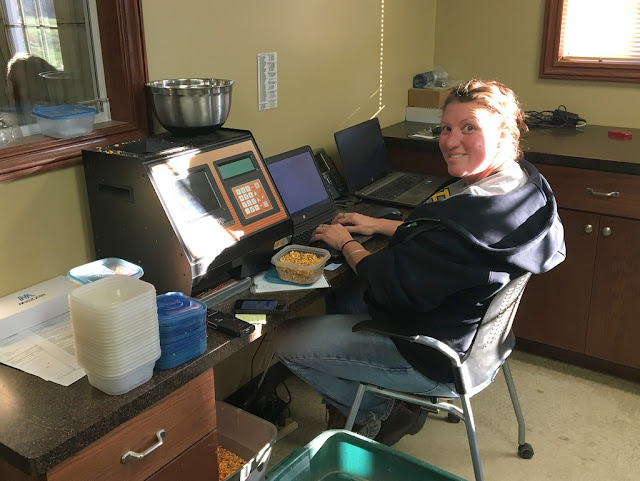So as part of my travels through the summer, I often show some sort of field fertilizer comparison. I try to get caught up on how those turned out after harvest. I thought I would start close to home, where on May 3 in the post: Wheat Streaks I showed a wheat field with some topdress strips of AgroLiquid vs urea. Specifically it was 15 gal/A of PRIMAGRO N + 14.5 gal/A of High NRG-N + 1 qt/A of Micro 500 + 1 qt/A of Manganese applied on April 14 compared to 250 lb/A of urea applied on April 24 (in the original post I put 200 lb of urea, but as I found out later, it was 250 lb). The AgroLiquid strips were nice and green while the urea wheat was yellow. This pic was in the May 3 blog post. You can see the other strip in the upper right corner. Two 80 ft passes of AgroLiquid were made on the North side and one on the South side.
A month later they looked similar in color as the urea wheat had greened up. Unfortunately there was a lot of grass here. I believe it was smooth brome grass. It got sprayed with Huskie, but that wouldn't control grass.
At harvest, a single 15 ft pass was made with our combine was made in adjacent sections of the topdress treatments, down to the end of the trees (yellow line) which was 915 feet. The combine drove in the middle of the strips to avoid any stray urea influence. Yields were determined with our scaled grain cart, and are on the picture below. (This was a drone image taken on May 3.) 
The yields were low for the area, undoubtedly due to the grass infestation. But there was an overall 5 bu/A advantage for the AgroLiquid. There was a bigger difference in the North comparison. The higher yield was from AgroLiquid, but it was just a slightly higher overall return (check local listings). But wouldn't you rather spray topdress with your own sprayer instead of having to pay for a spreader?



































